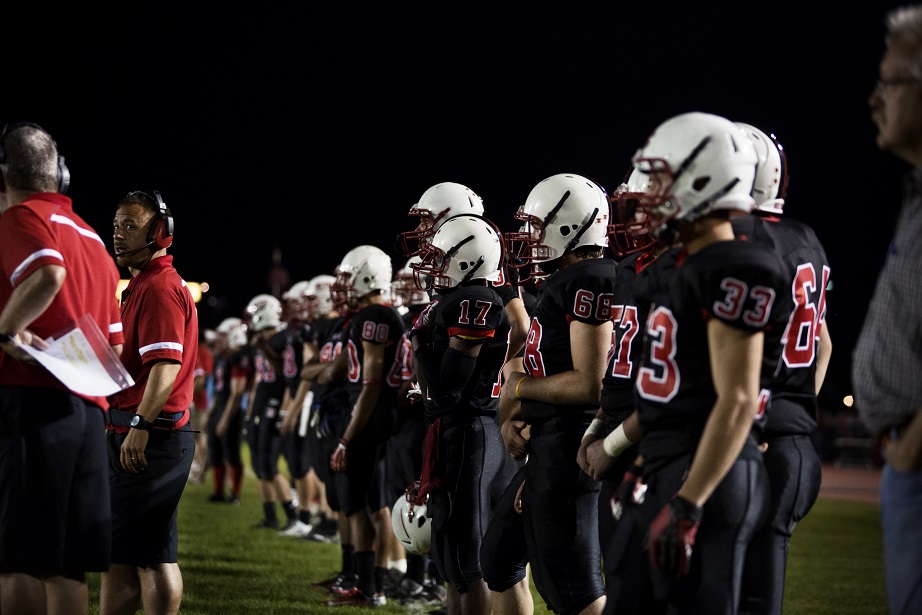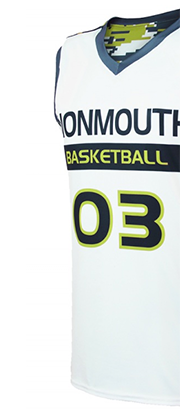Youth American Football can be a challenging and rewarding experience for both players and coaches. It’s essential to have the right knowledge and strategies in place to ensure success on game days. This blog post will give you some helpful tips on how to improve your youth American football team, including having a positive attitude, developing good practice habits, using the right drills and plays, and focusing on team building. With the right approach, your team can be a powerhouse in their league! So let’s get started and learn how to make your team great.
Key Takeaways:
- Have a positive attitude and strive for success as a team.
- Develop good practice habits, focusing on drills and plays that best suit your players’ strengths.
- Focus on building strong relationships between players and coaches to create a cohesive team dynamic.
- Encourage proper hydration and nutrition for your players.
- Utilize scouting and analytics to maximize performance on game day.
- Monitor game film and make adjustments to improve future performances.
- Encourage team bonding activities outside of practice to build better relationships between teammates.
Equipment for Youth American Football Drills
- Helmets: A helmet is the most important piece of equipment for any football player, regardless of their age. Find a helmet that fits correctly and provides adequate protection against impacts.
- Shoulder Pads: Shoulder pads are critical for protecting the shoulders, chest, back, and upper arms during contact drills and games. Look for pads that fit snugly and are designed to move with your body as you make cuts and dodge defenders.
- Football Cleats: Quality cleats provide traction on the playing surface and can help keep players from slipping while making quick turns or stops. The ideal cleat will have a combination of grip, durability, and comfort.
- Football Gloves: Quality gloves will help players grip the football and protect their hands from scrapes and scratches while they’re making catches or blocking opposing defenders. Find a glove that fits snugly but still allows for a full range of motion in the fingers.
- Mouthguards: A quality mouthguard is essential to protect teeth, lips, and gums from impacts during contact drills. Make sure to buy a mouthguard that fits properly so it can do its job effectively.
- Practice Jerseys: Football uniforms should be lightweight and breathable so players don’t overheat while running drills or playing games. Look for shirts made of moisture-wicking materials that dry quickly and keep players comfortable.
The Benefits of Performance-Based Drills
Performance-based drills are a great way to help improve the overall performance of your youth American football team. These drills involve specific exercises and movements designed to simulate real game-like situations and can be used to develop strength, agility, speed, footwork, and endurance.
Performance-based drills also help teach players how to effectively work together on the field. The drills involve players working in groups, or as part of a unit, and they must be able to cooperate while still pushing their performance levels. This teaches team-building skills and encourages cooperation during game situations.
Performance-based drills can also help foster competition within the team. These drills can be used to measure individual player performance, and they can also be used to show progress over time. This helps motivate players to become better so they can compete with their fellow teammates.
Strategies for Effective Drills
As a coach of a youth American football team, it’s important to keep your players motivated and engaged in practices so that they can continue to improve their skills. One of the best ways to do this is through effective drills. Drills are an essential part of any football program, allowing players to develop and refine their technique on both offense and defense. Here are some tips to help you get the most out of your drills and create an effective practice plan:

- Breakdown drills into manageable parts – It’s helpful to break down complicated exercises into simpler, more manageable components so that players can understand and execute each step. This will also make it easier for them to make corrections and improve their performance.
- Introduce drills gradually – Start with the basics and build up from there so that players can master the fundamentals before moving on to harder drills. This will help them develop a solid foundation of skills that they can use in-game situations.
- Make it fun – Players are more likely to stay engaged in practice if they’re having fun. Incorporate games or other activities into your drills to keep players interested and motivated.
- Give feedback – Provide positive reinforcement for good performances and constructive criticism for mistakes, so that players understand the right and wrong ways of doing things. This will help them quickly identify and correct their errors.
- Utilize technology – Use video recordings and other digital tools to review drills and help players understand them better. This will give them a more accurate understanding of what they need to do to improve.
By following these tips, you can create an effective practice plan that will keep your players motivated and engaged in drills. With proper instruction, your team will be well-prepared for their next game!
Mental Endurance Training Techniques
Mental endurance is as important to young football players as physical strength. While training the body helps build stamina, players must also train their minds to remain focused and perform at their best throughout a game or season. Here are some tips to help your youth American football team improve their mental endurance:
- Teach Visualization Techniques: Visualizing success is a powerful tool that can help football players stay focused and motivated. Teach your team to take time before each practice or game to close their eyes and imagine themselves executing plays perfectly, winning the game, and accomplishing their goals on the field. Remind them that if they visualize it, they can achieve it.
- Create a Positive Environment: It’s important to create an atmosphere of encouragement and positivity on the team. When players are supported, they feel more confident and can better focus on their goals. Encourage positive thinking by using positive language and celebrating each player’s successes.
- Talk About Goals: Setting short-term and long-term goals with your youth football team can help keep them motivated and engaged. Ask your players to write down their individual and team goals so they have something tangible to strive for during the season. Ask them periodically how they are progressing and talk about any challenges they may be having in meeting those goals.
- Focus on the Process: It’s easy to get caught up in how much your team wins or loses, however, it’s important to help players focus on the process of improving and learning. Give your players measurable goals that have nothing to do with winning or losing, such as completing a certain number of drills correctly or executing plays with precision.
Strength and Conditioning Exercises for Youth Players
Youth American Football teams have a unique set of challenges when it comes to strength and conditioning. It’s important to understand the physical capabilities of each player, as well as their individual needs. By tailoring strength and conditioning exercises around these needs, teams can ensure that every player can perform at their best-come game time. Here are some tips to help ensure success:
- Start with basic exercises and progressions. Before jumping into more complex exercises, make sure youth players understand the fundamentals of each movement. This will help them develop proper form and technique before they do anything too strenuous or advanced. Simple movements like squats, push-ups, sit-ups, and planks are great places to start.
- Make sure the exercises you select are age-appropriate. Youth players should not be doing a lot of heavy lifting or high-intensity activities, as their bodies are still developing and need time to adjust. Stick to body weight or light resistance exercises for best results.
- Focus on functional exercises. Exercises that mimic the movements of a football game are essential for developing agility, speed, and power. Examples include ladders drills, box jumps, jumping jacks, sprints, and agility drills.
- Incorporate plyometrics into your training program. Plyometric exercises help to increase the explosiveness and power of youth players. These exercises involve explosive movements and should be done with caution. Examples include box jumps, depth jumps, and medicine ball slams.
- Utilize recovery methods after workouts. Muscles need time to rest for them to repair and become stronger. Make sure your players are taking the time to stretch and foam roll after training sessions to help ensure they are prepared for their next session.
By incorporating these tips into your strength and conditioning program, you can ensure that all of your players are performing at their best-come game time. Remember – it’s important to tailor exercises to each player, as well as make sure the workouts are age-appropriate. Good luck!
The Importance of Hydration and Nutrition
Football is a grueling sport that requires players to be in peak physical condition. If your youth American football team wants to perform at its best, players and coaches need to understand the importance of proper hydration and nutrition.
Proper hydration is key to keeping your players safe and performing at their maximum potential. During football practices and games, players lose a lot of fluids due to sweating and other physical activities. Coaches and players need to take measures to ensure that they stay hydrated throughout the game with water or sports drinks.
Players should be advised not to drink carbonated beverages or large amounts of caffeine as these can cause dehydration. Additionally, players should be encouraged to drink throughout the day rather than wait until the day of a game or practice to hydrate themselves.
Nutrition is also an important factor for football players. Players need to eat properly to supply their bodies with enough energy and nutrients for long practices and games. Eating nutritious foods like fruits, vegetables, and lean proteins helps to keep players energized and focused on the field.
Players should also be careful about eating sugary snacks or processed foods as these can lead to fatigue and lack of focus. Players should also avoid overeating before games or practices as this can cause them to feel sluggish.
By following these tips, coaches and players can ensure that their youth American football team is performing at its best and staying safe. Proper hydration and nutrition are essential for any athlete, especially those playing a high-impact sport like football. By paying attention to the importance of hydration and nutrition, your team can stay safe and perform their best.







